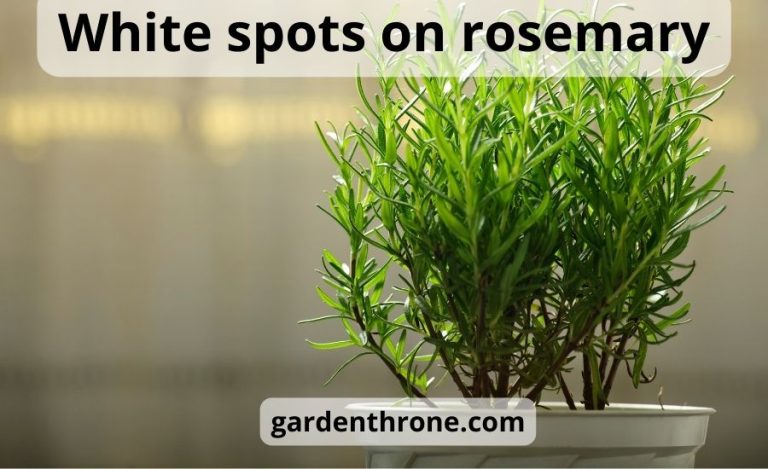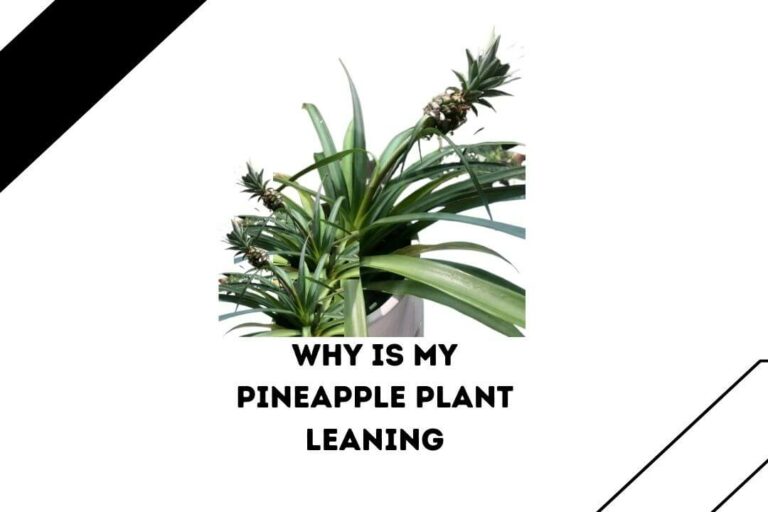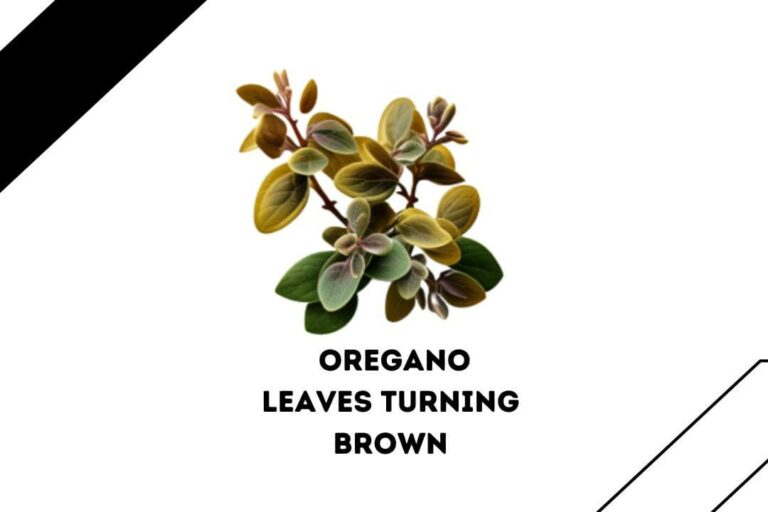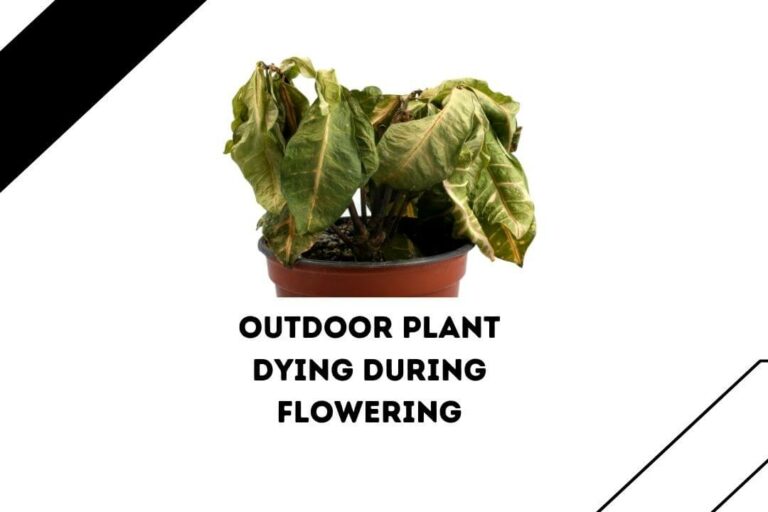If you’re worried about the squishy texture of your aloe plant? Don’t be so. This article will explore the most common reasons why aloe vera plants feel squishy. People often get concerned and worried when they notice their ‘aloe plant leaves squishy.’
Hence if you’re also wondering, ‘why is my aloe plant squishy,’ you should know that there could be multiple reasons. Some common reasons my aloe plant is squishy include overwatering, underwatering, root rot, pest infestations, disease, Temperature, soil, and container size. You must pay attention to finding out the actual guilt and then look for actionable solutions.
9 Reasons Why Is My Aloe Plant Squishy
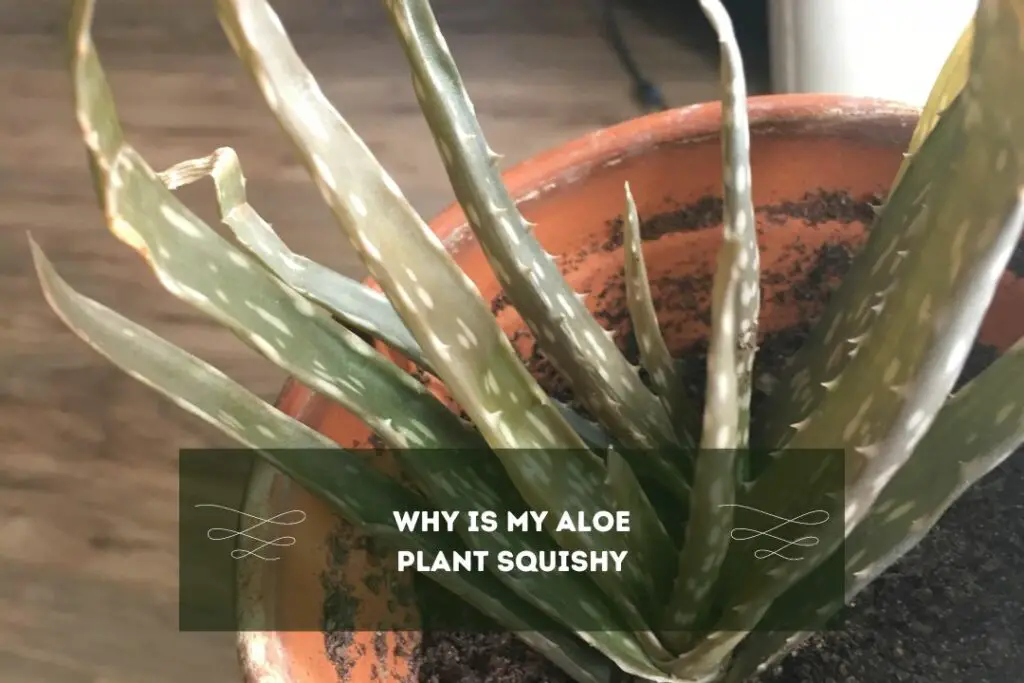
Overwatering
One of the most common reasons why aloe plants become squishy is overwatering. Even though aloe plants require regular watering, too much water can cause their roots to rot, leading to a squishy texture. According to the Indoor Nursery, aloe plants need a well-draining soil mix. Therefore, allow the soil to dry out completely before watering your aloe plant again.
Signs
If you notice that the leaves of your aloe plant are turning brown or black and are mushy, it may be a sign of overwatering. Another sign is the presence of mold or fungus on the soil, which happens due to excess moisture.
Solution & Prevention
Fix: First, remove your aloe plant from its container and inspect its roots. If you notice its roots becoming black & mushy, trim them off quickly but carefully with clean scissors or pruning shears.
Afterward, replanting your aloe in a well-draining soil mix in a container with suitable drainage holes would be best. Lastly, Water your plant only when the soil has completely dried out.
Prevention: you should never Water Your aloe vera plant if its soil is still the most. First, dip your finger about a couple of inches into the ground and check if it’s dry. It would be best to allow the soil to dry completely before watering the plant again. Also, ensure the container has drainage holes, and the soil mix is well-draining.
Sunlight
Sunlight is also an essential factor in the texture of the aloe plant. Too much or too little sunlight can cause the aloe vera plant leaves to become squishy. According to the University of Florida, aloe plants require bright but indirect sunlight.
Signs
If your plant receives too much sunlight, you’ll likely notice its leaves becoming brown and dry. On the other hand, If your plant is not receiving enough sunlight, its leaves will start to turn yellow and become mushy.
Solution & Prevention
Fix: if your plant is getting direct sunlight through a windowsill, you can consider moving it to another location where it receives indirect sunlight and shade during the daytime. You can also consider covering the window with a filter.
On the other hand, if your aloe vera plant is suffering from a lack of sunlight, you can consider moving it to a spot that receives lots of indirect sunlight during the day. If this is impossible or your plant is kept indoors, you can consider investing in a good quality grow light.
Prevention: You must prevent sunlight-related issues by placing your aloe plant in a location with bright but indirect sunlight and some shade.
Soil
The type of soil you’re using to grow your aloe plant can also affect its texture. As per this Site, aloe plants need a well-draining soil mix like sand, perlite, & peat moss. If the soil is too heavy or does not drain properly, it will cause water to accumulate in the ground, making your aloe plant susceptible to root rot and squishy texture.
Solution & Prevention
Fix: Use the correct well-draining soil mix with organic compost and fertilizer.
Prevention: You must avoid using heavy, clay-like soils as these can retain too much water and cause the roots to rot. Please stick with a well-draining soil mix. However, again make sure that the container has drainage holes.
Container Size
According to the Old Farmer’s Almanac, aloe plants require a container that is slightly larger than the root ball. It would be best always to consider planting your aloe vera in a container that is not too big or too small, as this can badly affect the amount of water your plant receives.
Signs
If you grow aloe vera plants in a too-large container, you’ll notice water accumulating in the soil. This will lead to root rot and a squishy texture if not treated correctly. On the other hand, If the container is too small, the roots can become crowded, and your plant may not receive enough water.
Solution
Fix: You must use a container that is slightly larger than your current aloe vera plant’s root ball.
Underwatering
Underwatering is another reason why aloe plants become squishy. Even though most aloe vera plants can survive in low-water conditions, they still require regular watering to thrive. There is no doubt that underwatering can cause the aloe plant’s leaves to become thin and wrinkled to avoid losing water. Hence this can lead to a squishy texture.
Signs
If you notice that the leaves of your aloe plant are thin & wrinkled while the soil is dry, it is a sign of underwatering. Another sign that indicates you are not providing a proper amount of water to your plant is white or yellow spots on its leaves.
Solution & Prevention
Fix: If you want to fix underwatering, you must water your aloe plant thoroughly and allow its soil to absorb the water. Make sure that you water the plant regularly, but avoid overwatering.
Prevention: To prevent underwatering, you should regularly monitor the soil moisture level. It would be best to consider investing in a good-quality moisture meter that can help you determine when the soil needs water.
Root Rot
Another reason your aloe plant leaves are squishy could be root rot. Root rot is a fungal disease often caused by overwatering and can generate a squishy texture on aloe plants. If you ignore root wrought, aloe vera plants will soon be unable to absorb oxygen properly as their hearts become saturated.
Signs
If your aloe plant leaves are turning yellow and becoming mushy, with black & slimy roots, it is a sign of root rot. If this is the case, you will also notice a foul smell from the soil.
Solution & Prevention
Fix: First, you must remove your aloe plant from its container and inspect its roots. If you notice any black and slimy seeds, cut/trim Them off with clean scissors or pruning shears. After that, you must report your aloe plant in a container with fresh but well-draining soil mixed with drainage holes.
Also, you can read: How to Fix Waterlogged Potted Plants?
Prevention: If you want to prevent root rot, ensure you’re avoiding overwatering your plant. Letting your plant soil out entirely before watering the mountain would be best.
Pest Infestations
You should know that Aloe plants also become squishy when they suffer from pest infestations. Several common pests like spider mites, mealybugs, and scale insects can affect your aloe plants.
Signs
- Spider mites are tiny insects that feed on the plant’s sap, which can cause a squishy texture. If your plant is suffering from Spider mites, you might notice holes on your plant’s leaves with web-like structures.
- Mealybugs are waxy insects that appear white and are often found on plants’ leaves & stems of the plant. They are also responsible for developing sticky substances on the leaves. Therefore, if you notice-ticky a sense, you n, ow know what insect or paste it could be.
- Lastly, Scale insects are usually small & round insects that can be difficult to identify through the naked eye. They are often found on the plant’s leaves.
Tip: you can also use a magnifying glass to detect what type of pest is infesting your aloe vera plant.
Solution & Prevention
Fix: If your plant is already suffering from pest infestation, I recommend using an insecticidal soap or neem oil spray to kill the insects. Please pay attention to the instructions on the product carefully before & when applying it to your plant.
It would be bestto used this regularly until the infestation is gone. In addition, you should also consider isolating the affected plants from other plants to prevent the spread of the infestation.
Prevention: If you ignore proper hygiene and maintenance of your garden plants, most of your specimen/plant varieties will become prone to test infestations. You must also provide the appropriate nutrients through organic fertilizer and add compost to their soil. Nutrient deficiency and watering issues can also make your aloe vera plant prone to pest infestations.
Disease
Like pest infestation, your aloe plants can also become squishy due to disease. Several common conditions can affect aloe plants, including fungal and bacterial infections.
Signs
If you notice your aloe vera plant leaves have a squishy texture, turning yellow and becoming mashi, they suffer from fungal infection. On the other hand, if you notice your aloe vera plant leaves becoming soft and emitting a foul smell, your plant suffers from bacterial infection. To identify what type of disease is affecting your aloe plant, you must inspect the leaves and stem of your plant regularly.
Solution & Prevention
Fix: if a plant is suffering from any disease, you will need to use a fungicide or bactericide specially designed for the type of disease you are treating on your plants to kill the infection.
Before applying any fungicide, pesticide, or bactericide to your plant, you should consider removing all the affected leaves or stems. This will help you a lot in preventing the infection from spreading.
Prevention: most fungal and bacterial infections usually happen when you ignore proper fertilization and watering. If you provide the appropriate nutrients through organic fertilization and adequate watering when required, your plant is less likely to develop any disease. However, you should also pay attention to regular maintenance & care of your plant while monitoring its overall appearance and health.
Related Articles
| Should you water your plant after repotting? (yes, but here’s how) |
| How long can plants survive in a car? |
| Why my indoor money plant leaves turning yellow |
Temperature
Yes, Temperature can also affect the texture of your aloe plant. Since aloe plants prefer temperatures between 60-75°F, you should avoid keeping your yellow plants below this.
Signs
If the Temperature is too high, your aloe vera plant leaves will become wilted and develop a squishy texture. On the other hand,If the Temperature is too low, the leaves will turn yellow and become mushy.
Solution & Prevention
Fix: if your plant is kept in direct sunlight or athigh temperature, you should consider moving your plant to a different location thawithcool but consistent temperature.
In addition, if your plant is not getting the proper amount of Temperature like the Temperature around it is very low, consider keeping It outdoors. Depending upon your reason & its climatic condition, you should relocate your plant to different spots until you get the right fixture.
Prevention: you must pay attention to prevent extreme Temperature by keeping your aloe plant in a spot that receives consistent temperatures. Avoid placing the plant near draughty windows or doors, as this can cause the Temperature to fluctuate.
Conclusion
After reading this article, I hope you understand why your aloe vera plant might feel squishy. Since several factors can cause an aloe plant to become squishy, you should always determine the actual culprit first and then take an actionable approach.
You should ensure that your aloe vera plant receives the right amount of water, sunlight, and soil. You must keep your aloe vera plant in an appropriate size container. If you follow all the advice and tips mentioned in this article, I can guarantee you will keep your plant squish-free and looking its best.
I tried my best to give you all the information on why my aloe vera plant is squishy. If you find this article helpful, then consider sharing it. Your share will help many people learn why my aloe vera plant is squishy. Do check our other useful guides on aloe vera plant care and management. See you in the next post. Till then, take care and goodbye.

